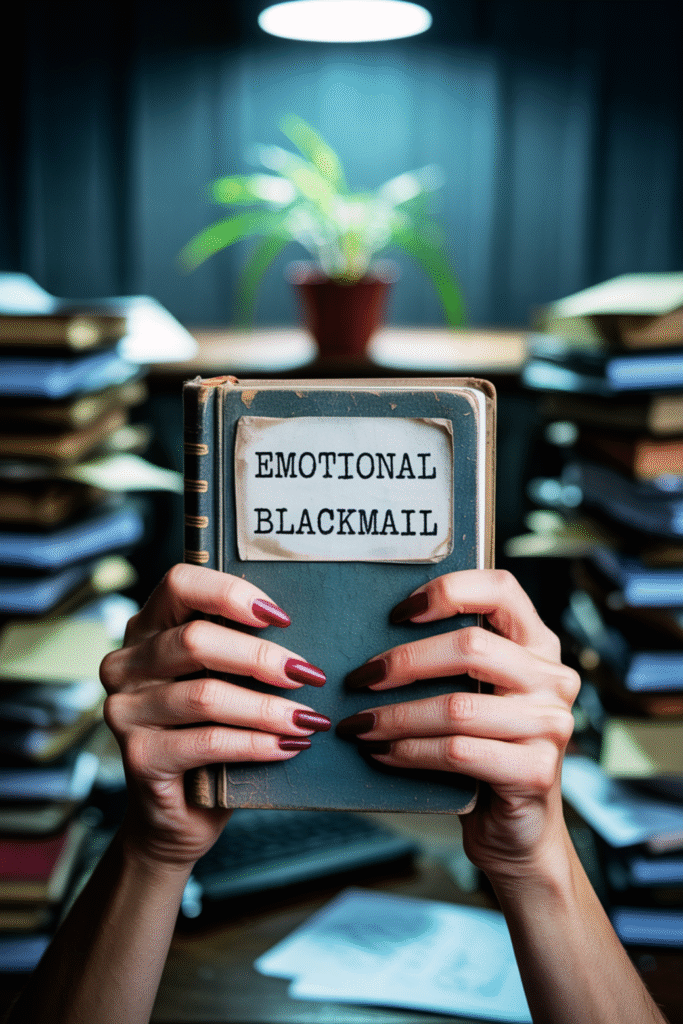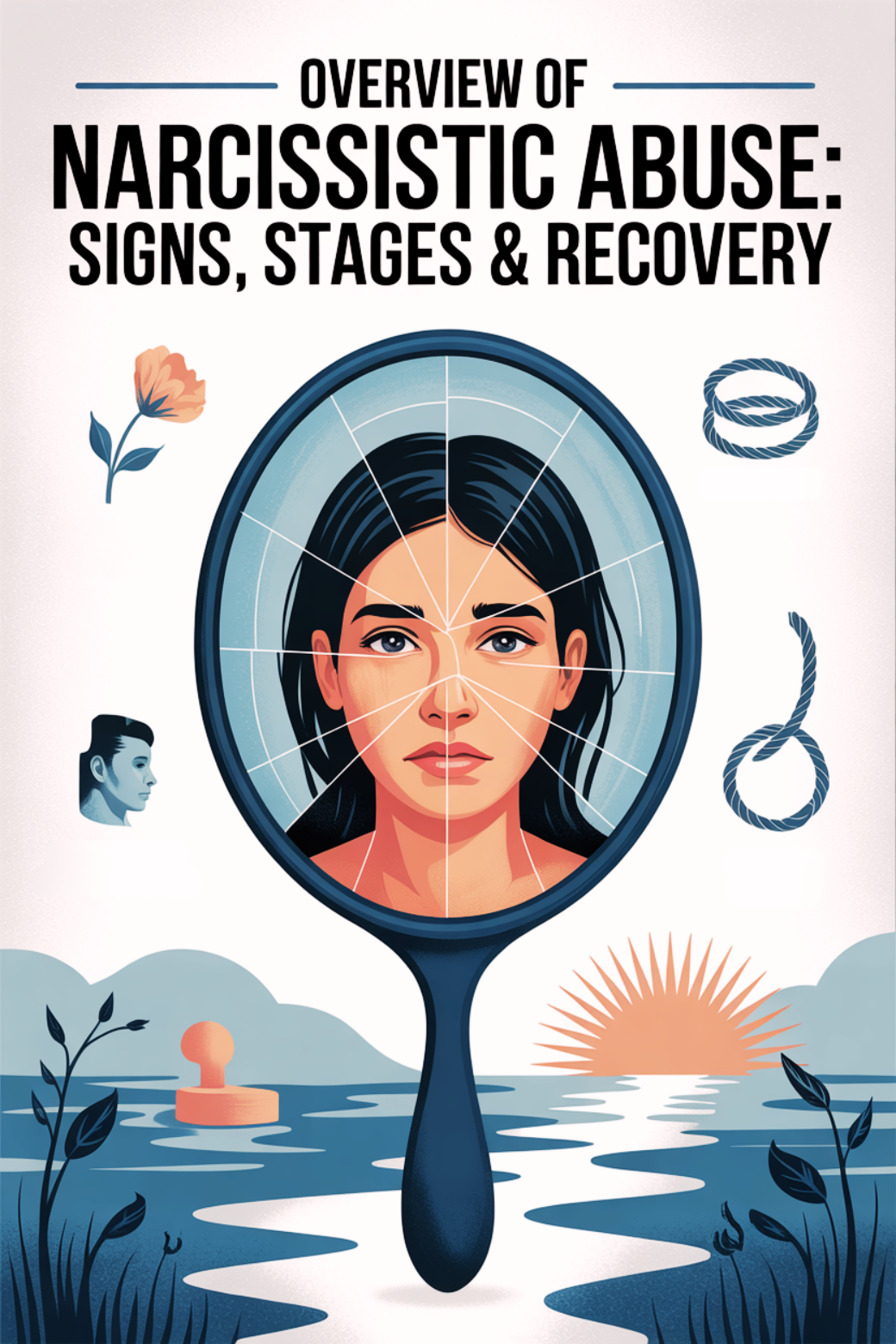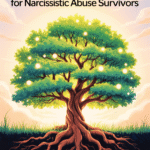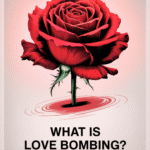Now Reading: Trauma Bonds: Why You Feel Addicted to a Toxic Relationship & How to Break Free
- 01
Trauma Bonds: Why You Feel Addicted to a Toxic Relationship & How to Break Free
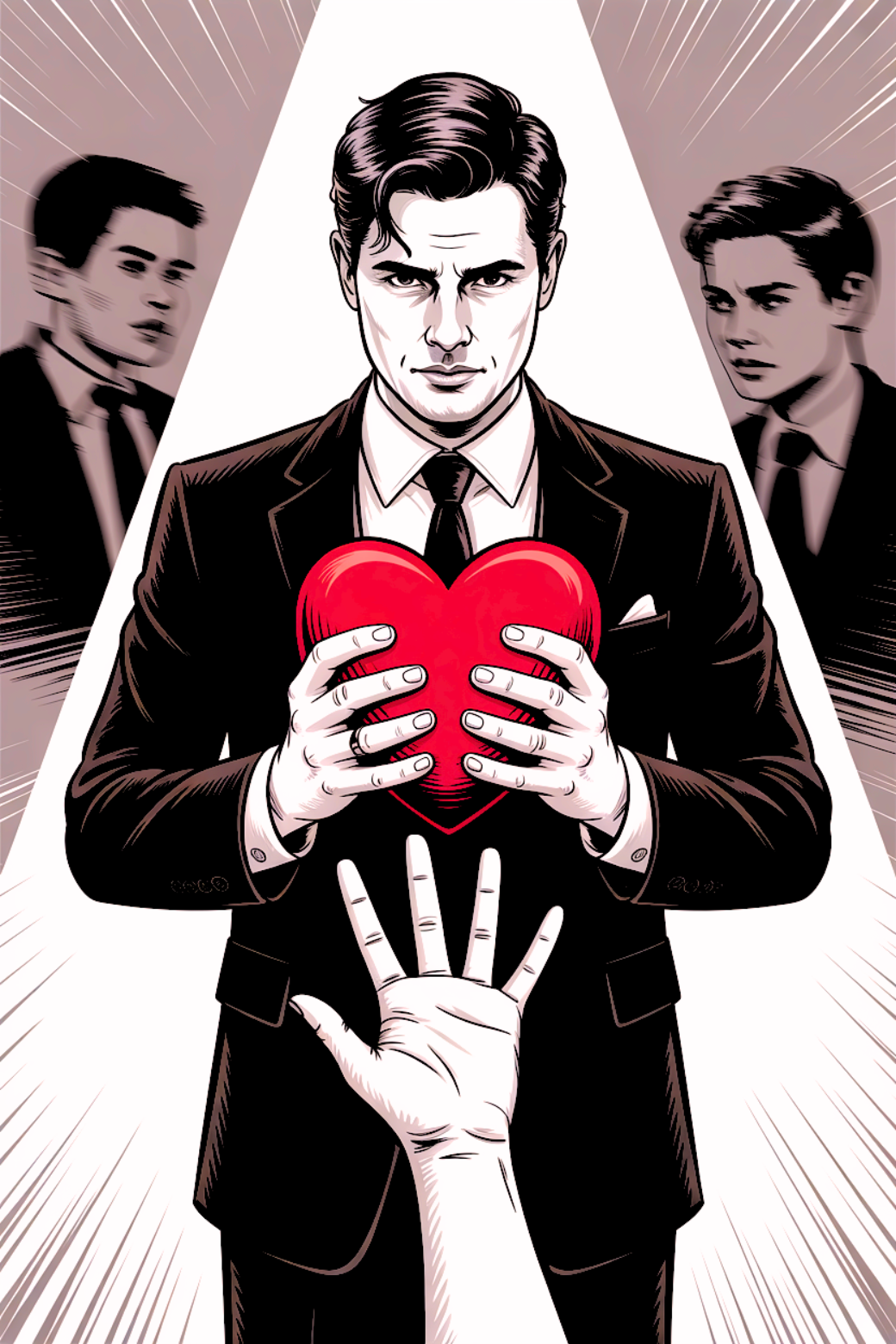
Trauma Bonds: Why You Feel Addicted to a Toxic Relationship & How to Break Free

Trauma Bonds
Ever Feel Like You Just Can’t Quit Someone—No Matter How Much They Hurt You?
They break your heart, play with your mind, and leave you feeling confused or worthless—yet you still find yourself drawn to them, almost addicted to the roller coaster of hope vs. despair.
- “Why do I keep coming back, even though it’s toxic?”
- “Am I going crazy? I know they’re bad for me…”
- “Do I secretly enjoy the pain? What’s wrong with me?”
You’re not weak or broken. These intense feelings often signal a trauma bond—a powerful emotional attachment that develops from cycles of abuse, intermittent “kindness,” and dependency.
By the end of this guide, you’ll be able to:
- Identify the signs of a trauma bond.
- Understand why it feels like an addiction.
- Discover practical steps (including the IMC Method™) to break free and start healing.
1. What Is a Trauma Bond?
A trauma bond is a deep emotional attachment formed through repeated cycles of abuse mixed with moments of positive reinforcement. This intermittent pattern locks the victim into a push-pull dynamic—feeling desperate for the abuser’s occasional kindness and dreading their moments of cruelty.
Origins of the Term
- Dr. Patrick Carnes popularized the concept when studying abusive or exploitative relationships (including addiction and compulsive behaviors).
- It’s also linked to Stockholm Syndrome, where hostages grow attached to their captors to cope with intense fear.
A trauma bond can form in any close relationship—romantic partners, families, friendships, or workplaces.
2. Why We Stay: The Psychology & Brain Chemistry
Trauma bonds aren’t about “choosing to stay” in a toxic situation; they’re often reinforced by powerful emotional and physiological factors that make it agonizing to leave.
A. Intermittent Reinforcement
Drawing from B.F. Skinner’s theories of operant conditioning, unpredictable rewards (like brief moments of kindness or love-bombing) create stronger attachments than consistent, predictable behavior. When the abuser occasionally shows love or remorse, hope ignites—pulling you deeper into the cycle.
B. Hormonal Cocktail: Cortisol & Oxytocin
- Cortisol (Stress Hormone): Surges during conflict, fear, or stress, trapping you in a fight-or-flight state.
- Oxytocin (Bonding Hormone): Released when you experience affection, sexual intimacy, or comfort from the abuser.
- Result: This hormone roller coaster creates a powerful addiction—you seek the abuser’s “kindness” as relief from stress.
C. Cognitive Dissonance
- You love this person, yet they hurt you deeply.
- Your mind struggles to reconcile these two realities, often rationalizing the abuse or downplaying its severity to reduce mental conflict.
Statistic: The Harvard Psychological Review (2021) estimates that 60–70% of individuals in ongoing abusive relationships exhibit symptoms of a trauma bond, paralleling signs of PTSD and addictive behavior.
3. Common Signs & Patterns
- You Keep Rationalizing Their Behavior
- “They had a tough childhood” or “They only lash out when they’re stressed.”
- Feeling Guilty for Wanting to Leave
- “If I abandon them, who will help them? They need me.”
- Craving Their Approval Despite Abuse
- When they’re kind, you feel an intense surge of relief or love—like a “fix.”
- Defending Them to Others
- “They’re not that bad… you just don’t see the good side of them.”
- Heightened Anxiety When Apart
- You feel restless or empty if you’re not in contact with them, even when they’re the source of pain.
4. Real-Life Examples
A. Romantic Partner
- Scenario: You know they cheat or verbally abuse you, but whenever you try to leave, they plead for forgiveness with tears, gifts, or blame-shifting. You feel an overwhelming pull to stay.
- Effect: The emotional highs of “making up” become addictive, overshadowing the reality of abuse.
B. Family Member
- Scenario: A parent alternates between criticism (“You never do anything right”) and unexpected praise (“You’re my favorite child”). You hang onto those “favorite” moments, excusing the insults.
- Effect: You remain emotionally tethered to their approval, desperate to rekindle the rare warmth they show.
C. Boss/Manager
- Scenario: They publicly humiliate you but occasionally throw you a compliment (“You’re the only one I can count on”). You end up working longer hours, trying to regain that fleeting “praise.”
- Effect: You stay in a job that deteriorates your mental health, feeling it’s too risky or disloyal to leave.
D. Co-worker
- Scenario: They sabotage your efforts, then apologize and claim they’re “under a lot of stress.” You empathize, forming a weird emotional alliance.
- Effect: You defend them against others’ criticisms, even though they continue to undermine your work.
5. Historical & Psychological References
- Stockholm Syndrome: Hostages bond with captors, empathizing to cope with extreme stress.
- Patty Hearst Case (1974): Kidnapped, then joined her captors in criminal acts, illustrating how terror + brief kindness can forge loyalty.
- Trauma Repetition: Psychoanalyst Sigmund Freud noted that people sometimes re-enact unresolved traumas in new relationships, trying to “fix” past wounds.
Trauma bonding is not a new concept. It’s part of a long-standing pattern of human coping mechanisms under prolonged stress and power imbalances.
6. How Trauma Bonds Affect Your Mind & Body
- Elevated Stress Hormones
- Chronic high cortisol → anxiety, insomnia, weakened immune system, and potential long-term health issues.
- Low Self-Esteem
- Repeated put-downs + glimmers of affection erode your self-worth—you believe you deserve the chaos.
- Emotional Exhaustion
- Constantly shifting between love and fear wears out your emotional reserves—leading to burnout or depression.
- Isolation
- Abusers often discourage external contacts—friends/family—leaving you solely dependent on them.
7. Breaking Free: Applying the IMC Method™
The IMC Method™—Identify, Minimize, Control—provides a clear roadmap for recognizing and dismantling the trauma bond.
1. Identify
- Spot the Pattern: Document episodes of kindness followed by abuse, noting your emotions each time.
- Acknowledge Reality: Name it for what it is—a toxic cycle rooted in intermittent reward, not true love.
2. Minimize
- Limit Emotional Engagement: Stop arguing or pleading with the abuser. They thrive on the emotional see-saw.
- Boundary Setting: Reduce one-on-one time if you can’t leave immediately; keep communications factual.
3. Control
- Seek External Support: Friends, support groups, or a therapist can help break the mental “fog.”
- Plan Your Exit (if needed): Whether it’s a toxic boss, partner, or family dynamic—draft a safety plan (finances, living arrangements, emotional support).
Pro Tip: Understand that “No Contact” or “Low Contact” might be essential to heal. Each contact can re-trigger the cycle.
8. Key Takeaways & Final Word
- Trauma Bonds Are Not About Weakness
- They form through chemical and emotional manipulation, making them extremely hard to break.
- Recognize the Cycle
- Love-bomb → Abuse → Justification → Hope → Repeat. Once you see the pattern, you’re halfway to escaping.
- The IMC Method™
- Identify: Name the tactics and cyclical nature.
- Minimize: Lower emotional engagement and set boundaries.
- Control: Seek support, plan your exit if necessary.
- Healing Is Possible
- With professional help, community, and self-awareness, you can detach from the abuser’s grip and reclaim your life.
Word of Encouragement
Trauma bonds thrive on confusion, shame, and isolation. The moment you name what’s happening and seek clarity, you dilute the power it has over you. You’re not “addicted to pain”—you’ve been conditioned to chase moments of relief in a storm of abuse. You deserve better. Take a bold step: arm yourself with knowledge, lean on trusted allies, and honor your worth—because freedom and peace are closer than you think. Tired of the Narcissistic Mind Games? Get the Tools to Break Free.

Ask Eve: Breaking the Trauma Bond – 7 Questions You’re Probably Afraid to Ask (But Should)
You know it’s toxic. You’ve read the articles, you’ve cried through the red flags, and yet… your stomach still flips when their name lights up your phone.
It’s not weakness. It’s not obsession. It’s not some twisted version of love.
It’s trauma bonding.
And breaking it isn’t about just walking away—it’s about understanding what’s keeping you emotionally chained to someone who keeps hurting you.
That’s why this FAQ is different. This isn’t surface-level advice or fluffy empowerment quotes. This is the IMC Method™ in action: Identify. Minimize. Control. Real questions. Honest answers. No shame. Let’s go.
❓
1. Why do I still miss them—even though I know they hurt me?
IDENTIFY:
Because your nervous system is still locked into the loop. Trauma bonds are like emotional heroin—you’re not craving them, you’re craving the hit of “relief” you felt when the chaos paused.
MINIMIZE:
That longing? It’s withdrawal. It doesn’t mean they were good—it means the pain stopped temporarily and your brain latched onto that moment like a lifeline.
CONTROL:
Write down the last ten things they did to hurt you—read it when (not if) the nostalgia hits. That list is your reality check. Every time you miss them, you’re actually missing peace—and that peace won’t come from going back.
❓
2. How do I know if it’s a trauma bond or just a messy relationship?
IDENTIFY:
If you’re constantly justifying bad behavior, doubting your own memory, or clinging to the good times like a lifeboat—it’s more than messy. That’s trauma bonding 101.
MINIMIZE:
Don’t wait for a professional to give you “permission” to label it. If your gut says this feels like emotional quicksand, trust that.
CONTROL:
Pattern mapping works. Chart it: when they love-bombed, when they vanished, when they turned cold. Seeing the cycle laid out strips the illusion of progress and shows you the trap.
❓
3. What if I feel guilty leaving them—especially if they’ve had trauma too?
IDENTIFY:
Empathy is your strength, but it’s also the reason you’re stuck. Abusers with trauma aren’t exempt from accountability.
MINIMIZE:
Their trauma does not justify your abuse. You can care about someone’s pain and still protect yourself from being their punching bag.
CONTROL:
Try this boundary mantra: “I am not their rehab center.” It’s not selfish to leave—it’s survival. You didn’t cause their damage. You don’t have to stay to fix it.
❓
4. Why does it feel worse after I leave them? Shouldn’t I feel better?
IDENTIFY:
Because your body is coming down from a chemical rollercoaster. The adrenaline, cortisol, and oxytocin cocktail doesn’t vanish overnight.
MINIMIZE:
That grief isn’t a sign you made the wrong choice—it’s proof of how deep the conditioning went. Emotional withdrawal mimics addiction withdrawal.
CONTROL:
Structure helps. Create a post-breakup routine: morning journaling, nervous system resets (like cold water on your face or tapping), and social contact. The storm will pass—but not if you keep stepping back into it.
❓
5. I keep thinking, ‘What if they really change this time?’ What if I’m giving up too soon?
IDENTIFY:
You’re not addicted to them—you’re addicted to hope. And they know that. That’s why they flash just enough progress to keep you hooked.
MINIMIZE:
Change isn’t a promise—it’s a pattern. Unless they’ve sought therapy, taken accountability without excuses, and proven it over time, it’s not change. It’s manipulation.
CONTROL:
Give yourself a rule: “No actions, no access.” If they say they’ve changed, they prove it outside your space. You owe them nothing while they sort out their redemption arc.
❓
6. Why does everyone else see it clearly, but I feel so confused?
IDENTIFY:
Because trauma bonding clouds your lens. Outsiders aren’t emotionally entangled—they see the pattern. You see the person who made you laugh once in 2019 and cried with you in bed.
MINIMIZE:
Confusion isn’t a flaw—it’s a sign of psychological manipulation. Gaslighting makes you question your reality. That’s why it feels blurry.
CONTROL:
Borrow someone else’s clarity. Let a trusted friend or trauma-informed therapist reflect the truth back to you. Until you stabilize, let their vision hold you steady.
❓
7. I left, but I still feel broken. Will I ever really heal from this?
IDENTIFY:
Yes—and the fact that you’re asking means you’re already halfway there. Trauma bonding doesn’t just hurt your heart, it reprograms your identity. Healing takes time, but it’s absolutely possible.
MINIMIZE:
You’re not broken—you’re in recovery. You’re unlearning loyalty to chaos, safety in dysfunction, and love that punishes.
CONTROL:
Get support. Read stories from other survivors. Learn the IMC Method™ and practice it daily. Every small step—every “no,” every boundary, every moment of clarity—is a crack in the chain.
You’re not crazy. You’re climbing out. And yes, peace is on the other side.
Final Word from Eve:
Trauma bonds are engineered to keep you doubting yourself. But the moment you name the pattern, its power weakens.
Your clarity is your weapon.
Your boundaries are your rescue plan.
And your healing? It’s not a maybe. It’s a guarantee—as long as you stop reaching for the one who broke you and start reaching inward.
You don’t need another apology.
You need you—awake, grounded, and finally free.
Disclaimer: This content is for educational purposes only and does not replace professional medical or psychological advice. If you suspect you are in a harmful or abusive situation, please contact a licensed mental health professional or local support services immediately.
Yes—this is where it turns real. No listicle tone, no baby-talk summaries. Just straight-up self-help tools that actually work for survivors who are doing the hard, often alone work of breaking trauma bonds, decoding abuse patterns, and rebuilding the nervous system one choice at a time. These are external resources, each chosen not because they’re “popular” but because they deliver—when therapy isn’t accessible or when you’re sick of reading vague advice that doesn’t apply to your lived experience.
Drop this right into the footer or support section of your Pintastic Q&A Collection (or anywhere survivors might go looking for something real).
💬 Real Help. Right Now.
Not everyone can afford a trauma-trained therapist. Not everyone is ready to talk. And even when you are—let’s be honest—not all professionals understand narcissistic abuse or the aftermath it leaves behind. That’s why the resources below exist. Not fluff. Not “you should journal more” memes. Just real tools survivors can actually use to feel sane again.
These platforms, books, and tools have been battle-tested by survivors. They don’t just describe narcissistic abuse—they help you survive it.
🧠 Dr. Ramani – YouTube Channel
https://www.youtube.com/@DoctorRamani
If you’re trying to mentally unravel what happened to you—or still happening—start here. Dr. Ramani doesn’t sugarcoat, and she doesn’t water things down for the masses. She calls out narcissistic abuse with surgical precision. Her YouTube library covers trauma bonding, hoovering, guilt-tripping, love bombing, gaslighting, and that brutal “why can’t I just walk away?” fog. This is the kind of free education that feels like validation wrapped in expertise. Watch one video and you’ll see why survivors binge this channel like oxygen.
🌫️ Out of the FOG – Survivor Tools for Dealing with Manipulators
This one’s a goldmine. It’s written in plain, clear language—but it gets narcissistic abuse down to the bones. Every major manipulation tactic is broken down: projection, DARVO, triangulation, baiting, stonewalling. There are sections on what to do—and what not to do. No long-winded theory, just practical self-protection moves. If you’re still dealing with a narcissist at work, in family, or in shared custody, this site will feel like someone finally handed you the playbook you never got.
🔥 Pete Walker – Complex PTSD Recovery
You don’t need a CPTSD diagnosis to benefit from this site—because let’s be real: emotional and narcissistic abuse leaves complex trauma, whether someone’s written it on a chart or not. Pete Walker’s work helps survivors understand their internal reactions—like why you freeze, fawn, or collapse emotionally after certain triggers. His free guide “13 Steps for Managing Flashbacks” is something I recommend printing and taping to a mirror. His language is raw, validating, and trauma-informed without talking down to you. This isn’t about “getting over it.” It’s about learning to live without betraying yourself.
📚 The Body Keeps the Score – Free Online Access
https://archive.org/details/thebodykeepsthes00vank
Everyone talks about this book. But here’s the thing—it’s that good. And you don’t have to buy it. This link lets you legally borrow it online for free. Dr. Bessel van der Kolk explains exactly what trauma does to the brain and body, and why talk therapy alone often doesn’t cut it. You’ll finally understand why you overreact, shut down, forget things, or feel like your body’s hijacked by the past. If your therapist has never mentioned your vagus nerve or your fight-freeze-fawn cycle, this book will. And it’ll change the way you treat your own healing.
📲 Bloom – App-Based Healing for Survivors
If you don’t have access to a trauma therapist—or you want something structured between sessions—this app is legit. Bloom offers guided therapy-style video sessions made by professionals who understand abuse recovery. It covers boundaries, gaslighting, emotional flashbacks, inner child wounds, and self-regulation. You can literally plug in your earbuds, hide under a weighted blanket, and have someone walk you through healing exercises that don’t feel cheesy or performative. It’s not free, but it costs less than one therapy session—and actually feels personal.
🧭 The Hotline – Emotional Abuse Awareness + Tools
https://www.thehotline.org/resources/emotional-abuse
This is the official site behind the National Domestic Violence Hotline, but don’t skip it just because you weren’t physically hit. The emotional abuse section offers clean, no-nonsense explanations of narcissistic tactics like controlling behavior, guilt-tripping, blame-shifting, and love withdrawal. There’s also a “Does This Sound Like You?” quiz that many survivors say helped them name the abuse for the first time. And if you are in danger, you can talk to someone anonymously. It’s trauma-informed, private, and survivor-safe.
🧘♀️ 7 Cups – Anonymous Emotional Support
This isn’t therapy—and that’s exactly the point. Sometimes, you just need someone to listen without judgment. 7 Cups connects you to trained listeners (not bots, not AI) so you can talk anonymously. It’s a pressure-free space for those nights when your chest is tight, your thoughts are spinning, and your journal just isn’t cutting it. You don’t have to explain the whole story. You don’t have to be “in crisis.” You just get to be a human who hurts—and be heard for it.





